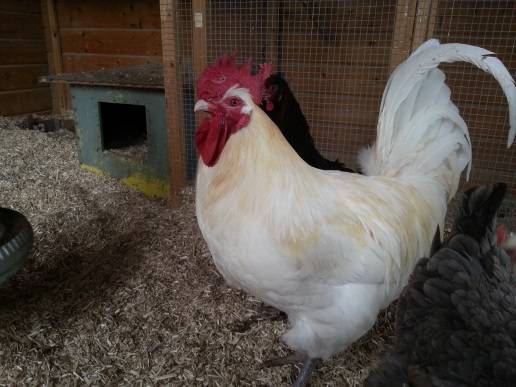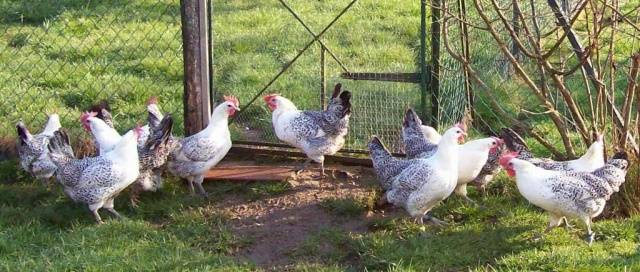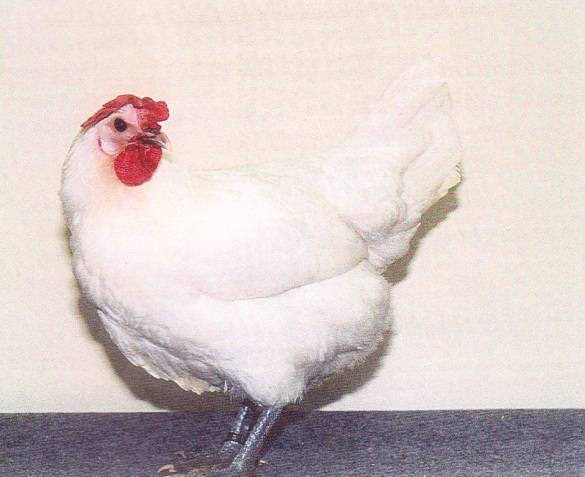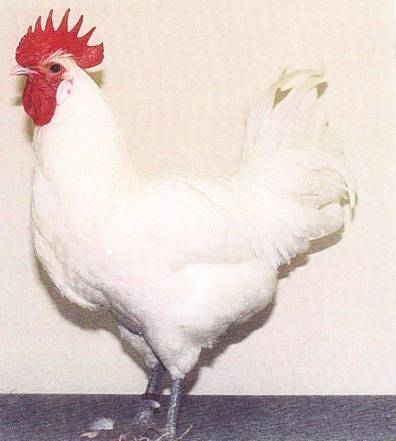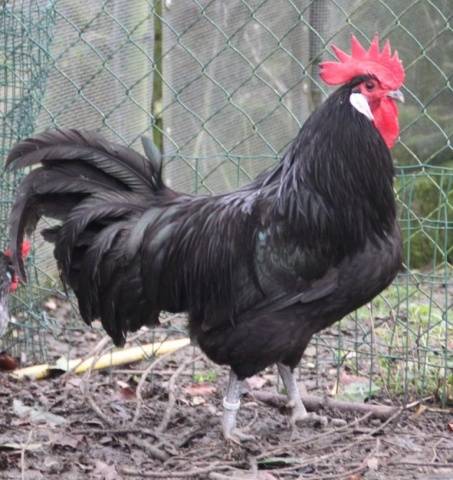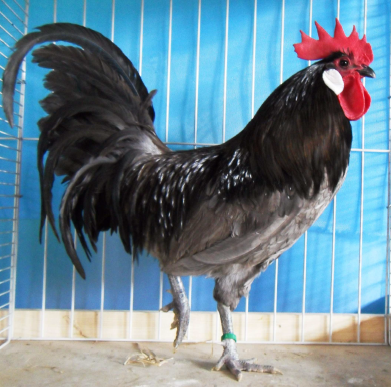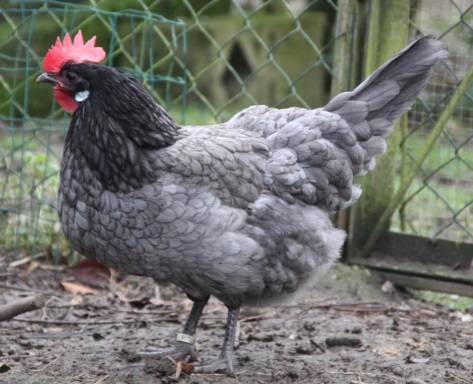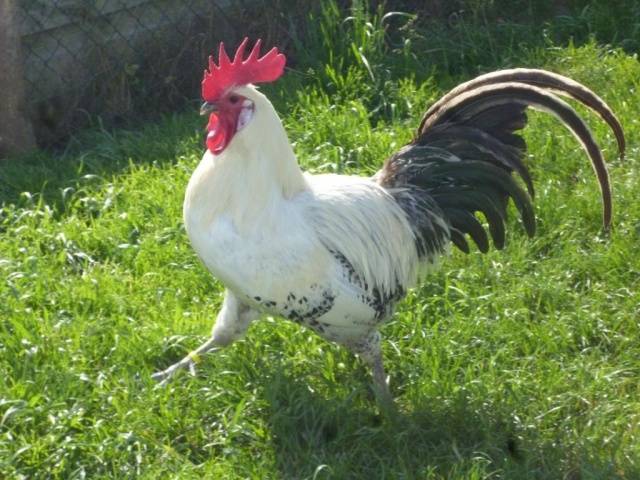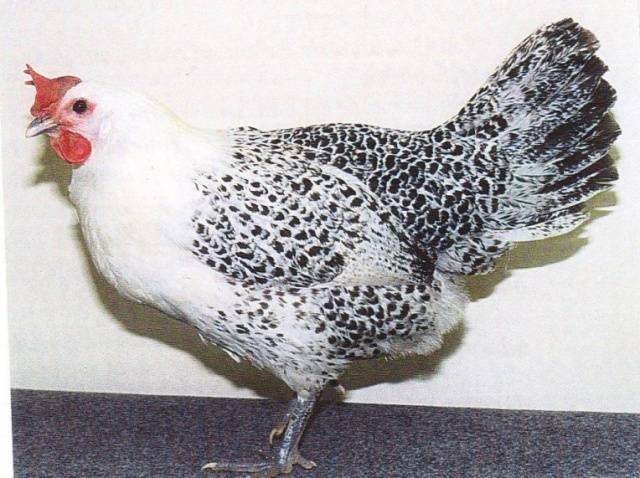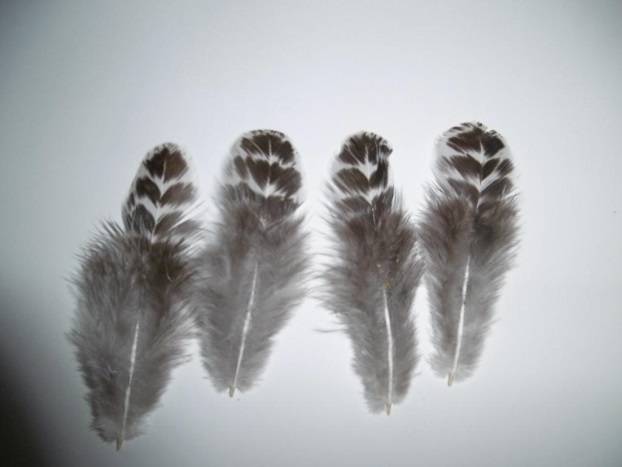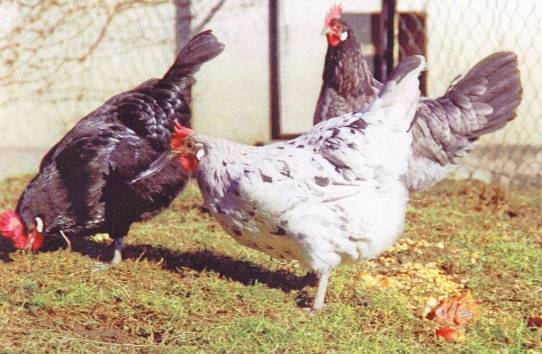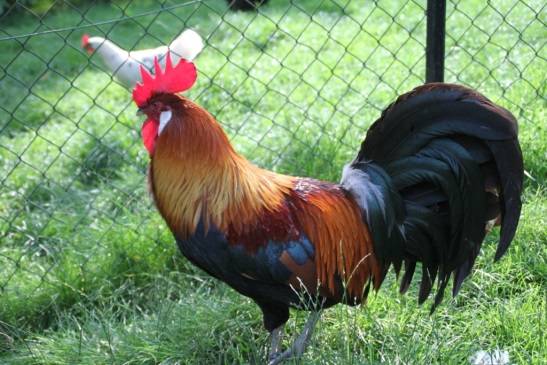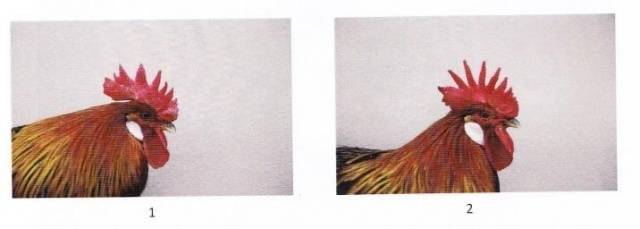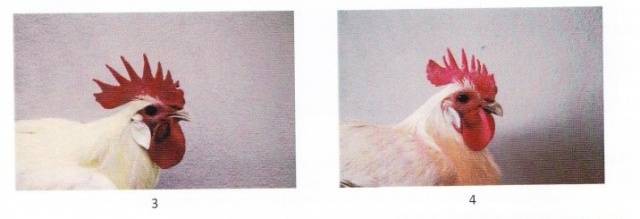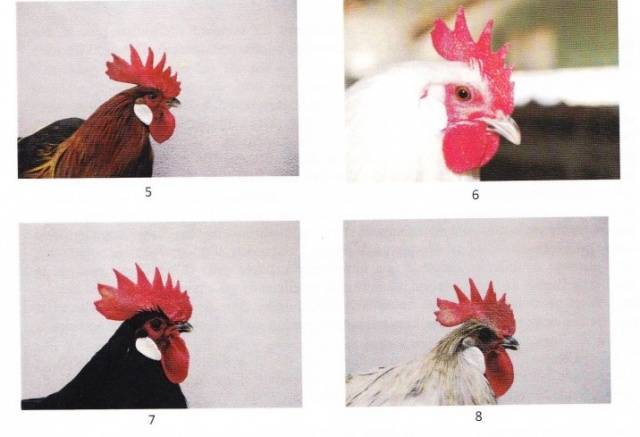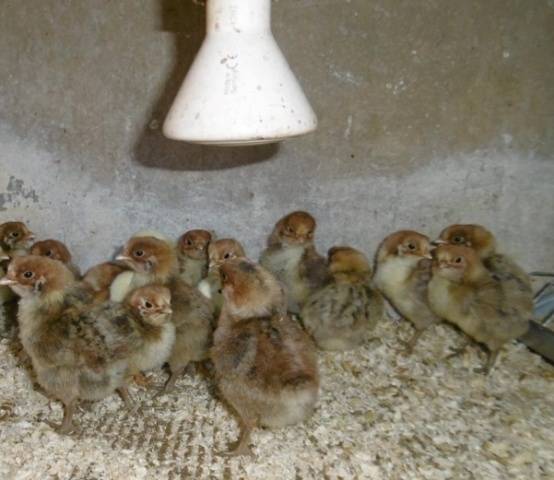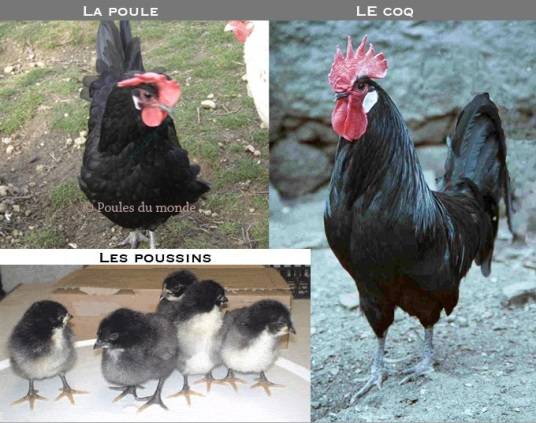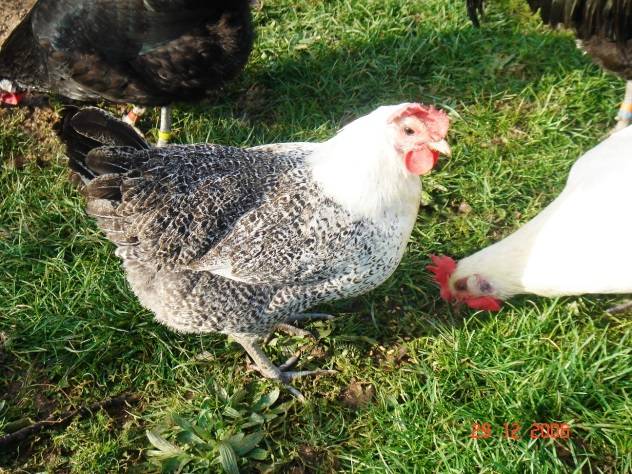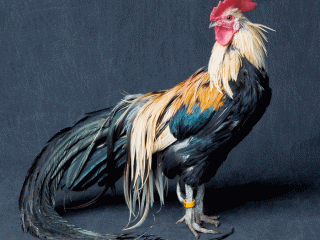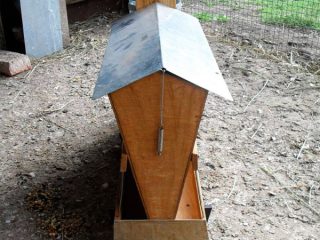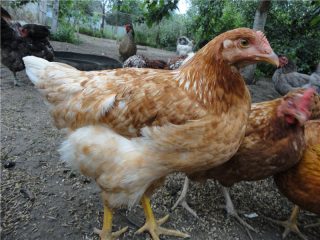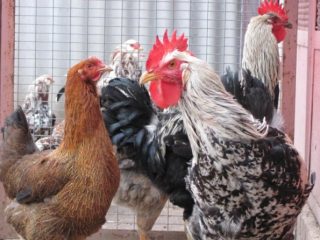The Bress-Gali breed of chickens was first mentioned in chronicles dated 1591. France at that time was not yet a united state and clashes often broke out between feudal lords. Bress-Gali chickens were valued so much that only 24 heads were considered sufficient gratitude for their help in battles. The first mention of the Bress-Gali breed of chickens is associated precisely with the conflict between the feudal lords and the presentation of 2 dozen chickens to the Marquis de Treffolt as gratitude.
The Gallic rooster was highly prized in France. So much so that this breed has become a symbol of France. In 1825, the famous gourmet Brillat Savarin wrote in his book The Physiology of Taste that the Bresset chicken is the queen of chickens and birds.
The first association of breeders of the Bress-Gali breed was created in 1904. And in 1913, 82 specimens of this breed were presented at the Paris Poultry Exhibition. At the same exhibition, Bress-Gali chickens were noticed by poultry farmers from other countries. After the exhibition, the export of the Bress-Gali breed to America, Canada, Brazil and England began.
In 1914, the standard of the Bress-Gali breed was established and the permissible colors were established: gray, white and black. Later in 1923 by Count Gandele, the president of the Bress Club, the blue color of the plumage was introduced and added to the standard.
One of these colors (fawn) was obtained by crossing with a blue Bress-Gali with fawn Orpington... To obtain red, Rhode Island red was added to Bress-Gali.
general description
Bress-Gali chickens are a meat breed. The bird is medium in size, elongated, elegant, lively. The backbone is graceful. Very thin and white skin. Live weight of a rooster is from 2.5 to 3 kg, of a chicken from 2 to 2.5 kg.
The conformity of the size of the Bress-Gali chicken to the standard can be determined by the diameter of the ring. For a rooster, the ring should be 18 mm in diameter, for a chicken 16 mm.
The white Bress-Gali rooster has a ring size of 20 mm (the largest size for poultry), and a chicken 18 mm. Larger size and caused the greatest distribution in the world of white Bress-Gali chickens.
Rooster characteristics
The elongated body is well balanced, slightly raised. The head is rather short and slender; the face is red and smooth. The crest is red, leaf-shaped, of medium size. The scallop has a fine texture, triangular teeth, the posterior part of the crest is raised above the nape.
Earrings are red, of medium length, smooth. Lobes are white, medium-sized, almond-shaped. The eyes are large, brown in color. The beak is relatively long and thin. The color of the beak depends on the color of the bird.
The neck is short, mane with well-developed lancets. The back is wide, long, slightly sloping. The shoulders are broad. Wings set on high fit tightly to the body. The loin is well developed. The tail forms a 45 ° angle with a dorsal line, dense, with numerous well-developed braids.
The chest is wide, full, prominent. The belly is well developed. The thighs are powerful and well muscled. Metatarsus are of medium length, with small blue scales. Unfeathered. There are four fingers on the paw.
Chicken characteristics
The description of the Bress-Gali breed hens almost coincides with the characteristics of the rooster, but adjusted for sexual dimorphism. The tail is very similar in set and fullness to the cock's tail, but without braids.A well-developed ridge stands straight up to the first tooth and then rolls over to the side.
Serious defects
The description of the exterior of the Bress-Gali chickens indicates the defects in which the bird is excluded from breeding:
- tail set high;
- too narrow body;
- poorly developed ridge;
- comb falling to the side of the rooster;
- white bloom on the face and earrings;
- not dark enough eyes.
In Russia, in fact, there is only a white color of birds of this breed, while the French description of the Bress-Gali chickens provides for four varieties of plumage, one of which is also divided into subtypes. And this is precisely the white color, although at first glance there is nothing to separate. But the French have a different opinion.
White
Completely white feather. Standard white chickens have red crests, earrings and face. The beak is bluish white.
White lightened differs from the standard pale pink comb of the face and earrings. The texture of the comb and earrings should be smooth without roughness.
Color defects: yellowish feathers and feathers of any color other than white.
The black
The plumage is pure black with an emerald sheen. The beak is dark. The hocks are gray and may not be very dark.
Color defects: presence of feathers of any color other than black; purple feather instead of green.
Blue
The rooster has black feathers on the mane. The tail is black. The back and loin are covered with a black feather with a blue speck. Only the chest and abdomen are monotonously gray.
The chicken color repeats the "wild" partridge color in other breeds, but in "blue tones". Feathers on the neck are darker than the main body color. The back, chest and abdomen do not differ in color.
A beak with a dark horn. A small light edging is allowed at the edges.
Color defects:
- too light blue;
- red feathers on the neck;
- yellowish plumage;
- black or white feathers.
Quite ambiguous requirements, since with the ban on black feathers, roosters are half black. Although when looking at the photo, the description of the blue chickens of the Bressov becomes clear.
Grey
The oldest color of Bress-Gali chickens.
The rooster has white feathers on its neck, lower back and chest. On the plumage of the body, each feather has gray spots, which are often hidden under the longer decorative plumage. The white wings have two transverse dark stripes, which are called "double cuffs".
A photo of cocks of the Bress-Gali breed of chickens clearly shows high-quality and low-quality cuffs on the wings. On the right is a good breeding rooster.
The tail feathers are black. The braids should be black with a white border. The color of the down is slightly red, the color is possible from pure white to slightly grayish.
Color defects of the rooster: "unclean" neck, back, chest and plumage of the lower back; braids with a lot of white.
The chicken has a white head, neck and chest. On the feathers of the rest of the body, there is an alternation of white and black areas. In general, the chicken looks variegated with a predominance of white. The tail feathers are also variegated. The belly is white, sometimes it can be grayish. The hock is usually dark gray, but may be bluish.
In the photo, the feathers of Bress-Gali chickens, corresponding to the description in the standard.
Chicken color defects: dark stripes on the feathers of the head, neck and chest; completely black feather shafts; completely black tail feathers.
The beak of chickens of this color is bluish-white.
In the description of the Gallic chickens, there is also a "golden" color. This is the partridge we are used to.
From the usual village layers of these hens, they are distinguished by dark metatarsals, white color of the lobes and strict requirements for the ridge, similar to Bress-Gali.
Crest
French breeders consider the shape and development of the comb to be of great importance when evaluating a rooster as a sire. Given the relationship between the development of the comb with earrings and the testes of the rooster, this opinion is justified. Do not cut open the rooster to make sure that it could be a good breeding bird.
Ridge quality assessment
To the photo of these cocks of the Bress-Gali breed of chickens, a description of the combs and the reasons why these birds should be excluded from breeding are given.
1. The beginning of the ridge does not meet the requirements of the standard. There are too many small teeth on it. Different in height, they break the overall harmonious line. The back is also unsatisfactory. The end of the ridge is not triangular and too small in size. The general combination of flaws makes the comb too rough and disharmonious.
2. The teeth on this ridge are too thin and long with a small base. There are a lot of small teeth at the beginning of the ridge. On the first large tooth there is an additional process, as a result, the apex of the tooth is also incorrect due to the perpendicular growth of the excess part. Such a prong is called split. In addition, the back of the ridge fits snugly against the back of the head.
3. In the third photo, the ridge is satisfactory, but the first tooth is poorly “connected” to the ridge, possibly due to injury in youth.
4. On the 4th photo there is a description of the vicious crest of the Bress-Gali breed of chickens. At the very beginning of the ridge, the tooth nearest to the beak bifurcates. This is not yet a vice, but it is already a disadvantage.
Further, the bifurcation of the ridge continues on individual teeth. The entire comb looks out of harmony. This cock should not be allowed for breeding, as such defects persist for a long time in the offspring.
5. The ridge is not harmonious. There is a strong difference between the first teeth and the next ones in height and width. The ridge blade at the back is too "cut" when it should end in a continuous curve in the form of an arc.
6. A rooster with a good simple comb, suitable for breeding.
7. In this photo, the comb corresponds to the description of the Bress-Gali chickens breed completely. The scallop has beautiful regular teeth and a fine texture.
The disadvantage of this scallop is the small distance from the back of the head. The last tooth of the comb should be arched, but here it is damaged by the last tooth, which pushes the comb against the back of the head.
8. The ridge in this photo is interesting in that its back follows the curve of the occiput without touching the head and neck. For Bress-Gali roosters, this is a satisfactory space between the neck and the crest.
But the ridge has other disadvantages: there are unwanted micro-teeth in the front part, the outgrowth on the second tooth is not needed, the ridge line is strongly cut. This cock is also undesirable for breeding.
Productive characteristics
In the French standard, the weight of the eggs is wisely indicated - 60 g and the color of their shell is white, but not a word is said about the egg production of these chickens. According to Russian chicken breeders, Bress-Gali chickens can lay up to 200 eggs per year.
As an advantage in the description of the Bress-Gali breed of chickens on Russian sites, they often indicate the possibility of obtaining eggs from as early as 4 months. Supposedly with proper feeding. But the French argue that with proper feeding, the layers will mature by 5 months and this period should not be rushed. Up to the point that it is recommended to separate chickens and cockerels by defining a different diet for them.
But this breed is prized mainly because of its tender meat that melts in the mouth. Roosters are characterized by rapid weight gain. At 2 months, they can already weigh 1.6 kg. But when keeping young stock for fattening, certain rules must be followed.
With such strict restrictions, you will have to come to terms with the fact that there cannot be Bress-Gali chickens in Russia, just as there cannot be champagne and cognac. These brands are owned by specific French provinces. But the name change is unlikely to affect the productive characteristics of the breed.
The nuances of content and diet
In Russia, there is practically no Bress-Gali breed of chickens. Only a few farmers brought these birds to the Russian Federation. Therefore, the experience of raising these chickens in Russia has not yet been gained.
According to French farmers, Bress-Gali chickens should be divided into groups by sex as soon as it becomes clear where the cockerel is and where the hen is. This occurs at the age of 2 months.
Once the flock is divided by sex, males should be restricted in movement for better weight gain. Heat is harmful to Bress-Gali chickens, therefore, in aviaries, birds should have enough shelter from the sun's rays and constant access to clean water.
Roosters must be kept separate to avoid fights with younger chicks. In a relaxed environment, they gain weight better. In addition, it allows the development of a separate diet for males to promote weight gain.
Chickens should not get fat during their growth, so a diet is developed for them that does not allow them to gain excess fat. You also need to make sure that the feed does not provoke early ripening.
As the roosters grow, they become pugnacious, and they are advised to wear special "glasses" to help stop fights. Intensive growth in this breed ends by 4 months.
According to the reviews of experienced breeders of the Bress-Gali breed of chickens, such measures allow them to get the maximum benefit from breeding these birds.
The beginning of egg production
Thanks to the 'eggs from 4 months' advertisement, delayed egg production is a concern for inexperienced owners. In the absence of eggs, there are two options for what to do if the chickens of the Bress-Gali breed do not lay. If it is related to age, then nothing. Wait until they grow up. In other cases, egg production may stop due to molting or short daylight hours. You need to wait out the molt. Daylight hours increase artificially.
Also, chickens may stop laying eggs due to illness or lack of vitamins. It is necessary to establish the cause of the decrease in productivity and eliminate it.
Testimonials
Conclusion
The Bress-Gali breed is a legitimate reason for pride among French poultry breeders. It is hardly possible to get objective reviews about the Bress-Gali breed of chickens from them. But with the appearance of these birds on the farms of Russian farmers, in a few years it will be possible to accumulate their own statistics on this breed.


